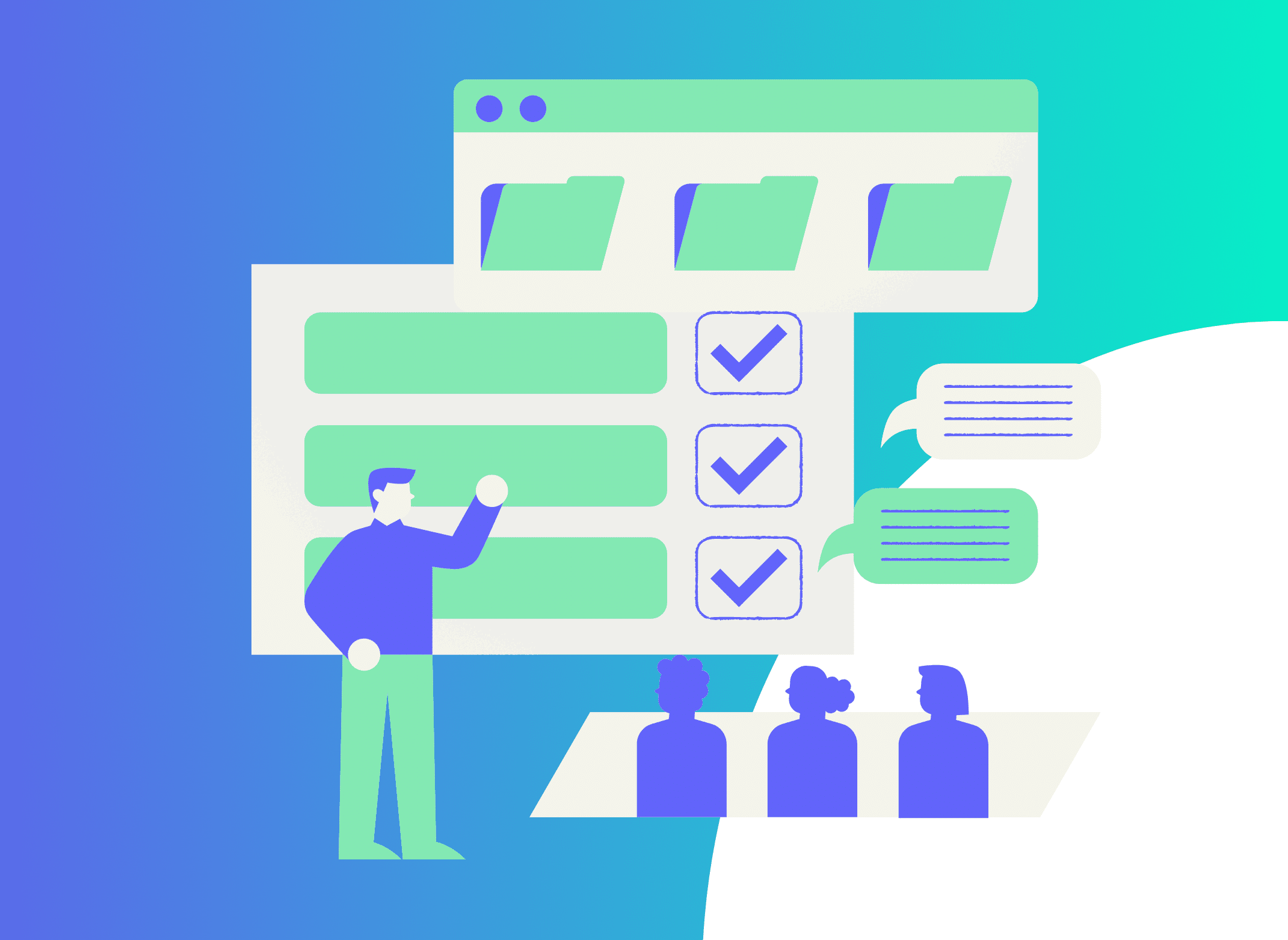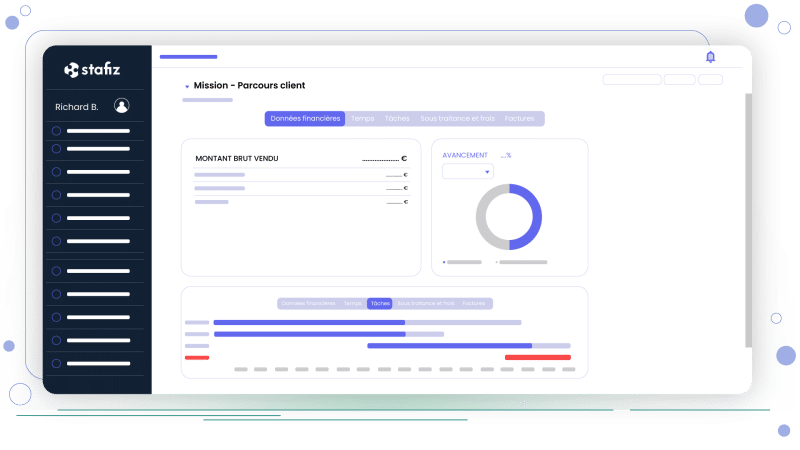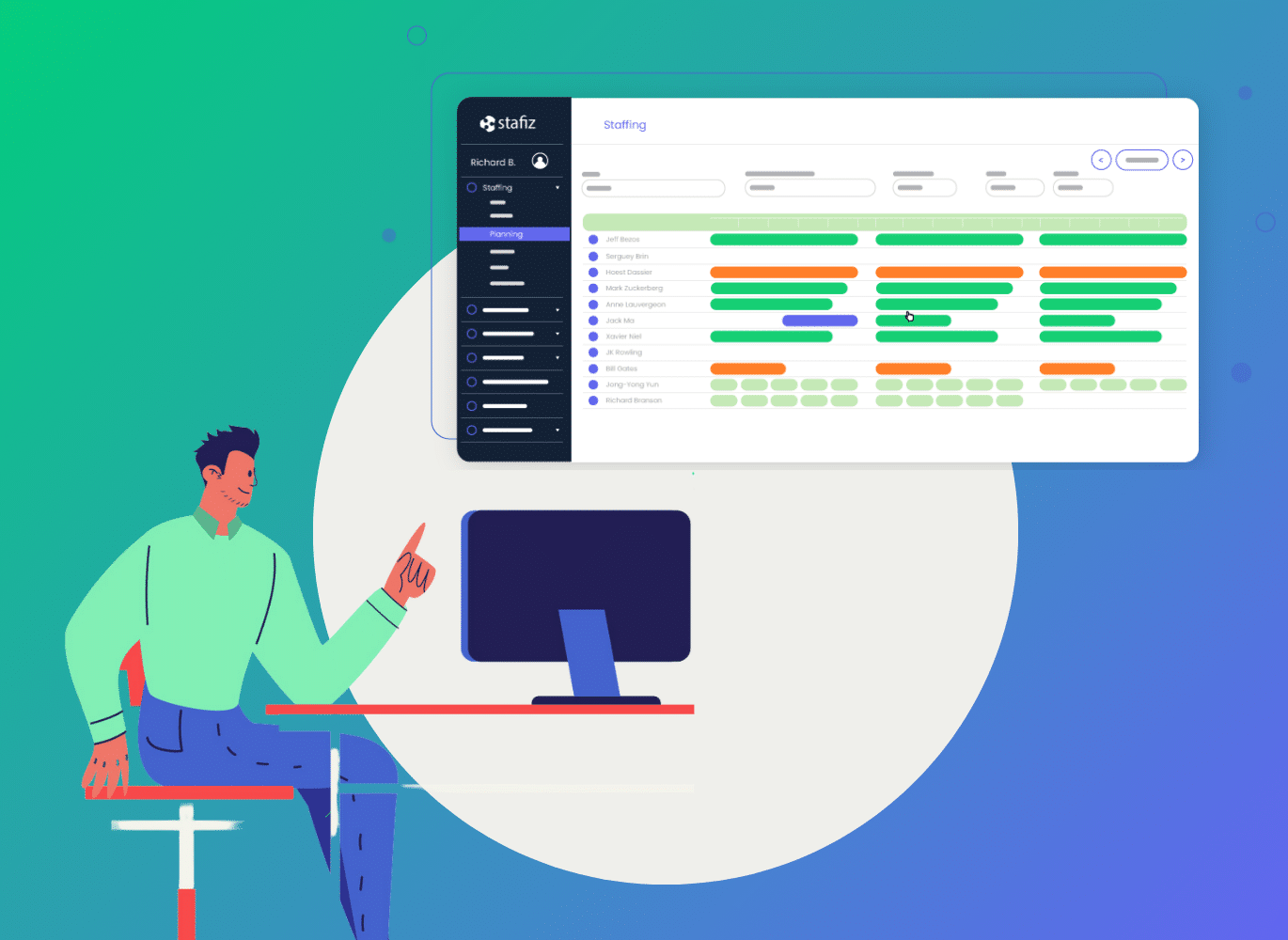5 best practices for workload planning

Juggling between availabilities, priority projects, individual skills... Allocating resources within a company is a colossal task.
This is where workload planning comes in. It allows you to organize resources as an effective productivity booster. It's all about finding the perfect balance between financial funds, technological tools and employee availability.
The objective is to deliver quality, while respecting costs and deadlines. In this article, discover a checklist of the 6 steps to plan the load of your business.
Know your resources inside and out
Take history into account
A study of the existing situation is the first step in designing a workload plan.
Use the available data to build a realistic view of the business, starting with looking at who has been working on what in the past months. This will give you a clear idea of the working time required and the skills available.
A retrospective of previous projects will help you identify strengths and weaknesses in order to establish a suitable load plan.
Track times with a dedicated tool
Time tracking involves measuring the time it takes your employees to complete a specific task. Specific tools can help you in this process. Stafiz offers a time tracking functionality. Everything is centralized on a single platform.
Ergonomic, it is designed to facilitate the coordination of teams, even those located at a distance.
Map your teams' strengths
With the help of your management teams, you can map out the full skill and capacity of your resources. This work will allow you to select the most relevant profiles for each project. To learn more about the subject, check out this resource management guide.
To identify your strengths and weaknesses, we recommend that you design a resource plan that lists:
- all your resources: human, financial, technical and physical;
- all the activities you need to improve your business and productivity.
The inventory of fixtures is essential in the design of a workload plan. This step helps to establish the existing situation in order to facilitate the estimation of the costs and price of the project as well as the type of invoicing to be preferred.
In addition, it helps to highlight the profiles to be selected for a project, those to be trained or recruited.
Resource allocation: think global, agile and committed
Think "global"
- Organize resources
Resource allocation should be managed according to the company's strategic objectives.
However, it is not uncommon to see certain resources disputed between different teams.
As a result, you need a global vision, specifically based on the project portfolio. Teams need to work together to plan resources intelligently across projects.
- Use a matching tool
You can use a dedicated tool to optimize your resource management.
Stafiz has a needs management module as well as a matching tool to help you identify the most suitable profiles for each project.
Think agile
- Flexibility
Flexibility is a key element for a good allocation of resources. Indeed, project and company plans are often led to deviate. Resources deserve to be adjusted regularly, based on portfolio priorities and business constraints.
This is also true at the project level.

Why manage your projects with Stafiz?
Gain visibility into your performance for every project in your portfolio.
- Short-term vision
A one-year vision is no longer as relevant as it used to be. Today, planning for the short term, 3 or 6 months, can offer greater responsiveness.
Indeed, many variations are likely to make the project evolve: change of teams, strategy or objectives, which imply quick decision-making.
- Agile method
Agile can then be relevant, especially for fast-moving business areas. Based on intensive development phases, it allows great flexibility and responsiveness.
Think "employee commitment"
Giving your employees the opportunity to work on projects that motivate them and give them access to new skills helps to engage them more. However, it is in your best interest to avoid disengagement and the drain of talent. This hinders productivity and complicates recruitment.
- Gather reviews
Gaining the trust of your teams requires time and listening. Spend time with your employees to learn about their needs : organize meetings, as a team and individually.
You must set up appropriate support methods, such as skills monitoring, appraisals and more generally the culture of feedback. They promote transparency and allow for constructive progress.
- Use the right tools
Tools can help with this. Stafiz allows employees to be stakeholders in their resource planning by offering a dedicated field so that they can declare their interests and career objectives.
Project managers have access to this data and can use it to strategically build teams.
To go further, find all our tips for making your resource planning a trigger for employee satisfaction.
Anticipate resource requirements
Your commercial success and customer satisfaction will depend on your ability to meet your customers' demands and challenges. As a service company, your resources are the heart of your reactor: anticipate them.
On one side of the equation, you have your incoming projects with a high probability of being signed, and on the other side, your existing resources, whether internal or external. Putting these two elements into perspective is known as resource capacity planning.
In order to anticipate your resources, connect your CRM to your scheduling tool, such as Stafiz (which integrates a CRM-like opportunity management module as well as an open API).
Integrating financial concepts into your planning
Beyond purely resource planning and HR — such as tracking utilization rate or employee engagement, with eNPS — but also productivity, with time and task tracking, it is important to track financial aspects in an integrated way. You thus obtain a sound management combining operational and financial performance.
Resource planning tools like Stafiz will help you save time. Indeed, unlike traditional tools such as roadmaps or Gantt charts, Stafiz allows you to centralize all the indicators you need to manage in real time and in forecasting.
Before projects
Anticipating costs is a good first step, but anticipating margins is even better! So you can make the best decisions in terms of workload planning.
Stafiz develops various scenarios for you thanks to AI based on your different "needs", (taking into account the appetites, skills, availability), mentioned above, and allowing you to visualize the different financial impacts
During projects: monitoring of diversions
Stafiz provides you with a predictive view, at the end of projects, and alerts to anticipate deviations before they occur, for fixed-price projects (but also on a time-and-cost basis). All indicators are automatically recalculated to benefit from an always up-to-date view of all projects.
Stafiz manages the aspects ADR and CJM so that you plan your staff not only in terms of the number of days but also in terms of valuation. For example, you can decide to replace a senior employee with two juniors.
The "project progress" feature allows you to organize your resource planning taking into account the financial vision. This way, you can identify when the overruns will occur and can therefore rectify the situation.
Standardize processes
Determine methods
Establishing a workload plan implies a certain uniformity within the company.
However, teams sometimes use different criteria to organize project budgets (distribution of tasks, number of days, roles, etc.).
It is therefore essential to find the right balance between methods that teams are comfortable with, which remain standard for the entire company.
Data must be measurable and comparable to assess the impact of resource allocation.
Identify schemas and create templates
As you go along, you'll identify repetitive patterns for allocating your resources.
The more information you have, the more you can automate and save time. Thus, your projects – and in particular the costing part thanks to templates – will help you improve your productivity.
This involves having analyzed the functioning of your teams, having structured the company and being clear about the company's strategic objectives.
Establishing a workload plan is a tedious job. The study of history, the monitoring of times, the anticipation of needs are essential steps in organizing the distribution of the workload.
This implies a good knowledge of the company. Resource planning tools like Stafiz can facilitate this introspection. The workload plan will then improve team satisfaction but also save time, thus generating a gain in productivity and profitability.
Questions:
- Analyze existing loads: Identify overworked or underutilized employees using load management tools.
- Consider skills: Assign tasks based on each team member's expertise and strengths.
- Plan accurately: Use tools like Stafiz to visualize priorities, adjust load, and avoid overlaps.
- Encourage communication: Cultivate an environment where your teams can report overload or need for support.
- Adapt continuously: Regularly reassess the distribution of tasks to adjust it according to unforeseen events or changes in priorities.


